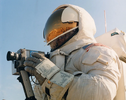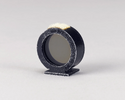Oh geez, I guess Im in for a penny, so here goes.
I’m inclined to add a few comments in this thread again, and it’s not to “prove” anything, but draw attention to the historical and cultural differences of the era in which the Space programs were accomplished.
Although I was a young girl, during the early Mercury, Gemini, and then Apollo missions, I witnessed some pretty amazing life happenings, and remember a lot.
Life was so very different in the late 50’s and throughout the ensuing 60’s and 70’s.
I have also, over the past 35 plus years of my life, spent time hanging out with pilots, aeronautical engineers and military “jet” jockeys.
I married the love of my in the early 90’s, who happens to hold a degree in aeronautic engineering and has completed a successful and accident free career as a Professional Airline pilot.
Over the years, we have also met several of the Canadian “scientist astronauts”, all very brilliant and sincere people.
So, from my observations, I “think” perhaps I have a bit of “cred” regarding the Strong characters and sharp intellects that those early pioneer “astronauts” had to be.
Oh, if you’ve never watched, or heard of the 1983 movie “The Right Stuff”, I’d highly recommend it!
It is a little “ over the top” in a few spots, hilariously so, at times but it nails the competence and masculine brilliance and bravery that embodied the aviation profession at the time.
And I don't know, but I've always assumed that they would've been supplementing the computer power with their brains, doing calcs by hand etc, storing data on paper and entering it into the computer when needed? Maybe I'm wrong.
I DO know, from first hand observations, and even today, no good pilot depends on the electronics completely.
You can bet that everything was done on paper, calculations, equations, everything checked and double checked.
Have you ever seen a E6B? Or, a slide rule?
Every keychain in our house has a little mini one on it, my husband’s handy work, lol.
They were supposed to be able to do EVERYTHING in and around the craft including being able to understand and handle the bigger context of getting from earth to the moon surface and back, manually, and with their own brains, without necessarily needing to use the computers and talk to earth and such
Exactly, every detail manually, with human brain power.
We use heuristics and experience and it is mostly what these pilots do.
Yeah, no, not “mostly” so much, from what I’ve observed.
The pilots are operating a machine, which is hurling through space, and it is not the same as walking or running.
All the steps and stages of flight are mechanical and must be memorized, every procedure, which switch gets pulled, what altitude must be maintained, wind speed factored in, a huge amount of information that does NOT come intuitively in most cases.
Heck, I’ve been a passenger in a jet that did a barrel roll, and without seeing the instrument panel gauge, I would have sworn we were right side up! We were not…
There are so many factors involved, especially flying high powered jets, it’s too easy to get overwhelmed if one little thing isn’t factored in.
Anyways, that’s my couple cents, for what it’s worth.
Heck, I guess I feel that, above all else, these men deserve dignity and respect for all they did.
Why not pop a big bowl of popcorn and if you can find it, watch that movie, “The Right Stuff”, and maybe we all can feel a part of ourselves soften, and find a glimmer of trust…that in spite of all the psychopaths and the lying, cheating a$$holes running this ol World, there are some real Hero’s out here too.




